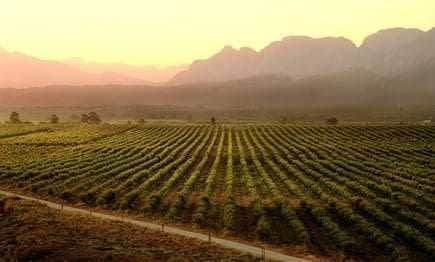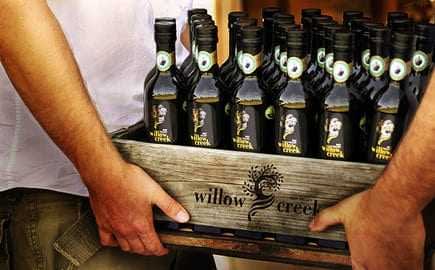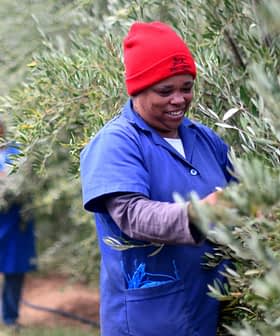
South Africans are growing more olives both for the table olive market and the production of olive oil. New trees are constantly being planted with olive farms growing at a rate of 20 percent annually and doubling in size every four to five years.
Compared to the world leaders such as Spain and Italy, an annual production of 1,200 tonnes of olive oil may seem insignificant, but it amounts to 20 percent of the local consumption. The rest is imported.
Today, South African olive oils are rated among the best, competing and winning international prizes abroad, while at home local demands are increasing due to more awareness of the health benefits and uses of olive oil. The country won its first prize in 1907. The first olive oil made in South Africa by a Mr. Minaar in Paarl was awarded the prize of ‘The best olive oil in the British Empire’. It may, of course, have been the only one. From those earlier days, international awards followed.
The 2011 harvest is still in progress, but already at the Los Angeles EVOO Awards, three prizes were awarded to local oils: Andante, for Best of Class Gold Medal robust Nocellara del Belice Western Cape 2011, Morgenster Estate which consistently wins international accolades, won a Silver Medal for its medium fruity oil of 2011, while Willow Creek, another consistent winner, obtained a Bronze Medal for its delicate lemon-infused oil.
As most of the olive plantations in South Africa, Willow Creek is situated in the Western Cape where the temperate Mediterranean climate is ideal for the groves. Andries Rabie planted his first olive trees here in 1999 and pressed his first olive oil in 2002. At Willow Creek Estate, they plant the classic cultivars — Coratina, Frantoio, Leccino, Barnea, Koroneika, Favoloza, Mission, Kalamata, Noccelara del Belice and Manzanilla.
Availability of labor in South Africa allows the ripe black fruit to be picked manually so the olives remain intact, not bruised. Harvesting in South Africa depends a lot on environmental conditions and usually takes place between March and July.

Arthur Goodger from Willow Creek said that there is a need to educate South Africans, to make them understand what makes a good quality olive oil. He feels this will help reduce the high volume of imported oils. In 2010, a total of 6,000 tonnes of olive oil was imported with an import value of R154.7 million ($225 million). “South Africa imports a lot of olive oils, more than we would hope and some not very good quality olive oil. The problem is there is no control over what olive oils are imported,” Arthur said.
The South African Olive Oil Association, (SAOlive) is committed to supporting a healthy future for South Africans and represents the interests of the South African Olive Industry. The one hundred members follow SA Olive’s published Codes of Practice which are based on international quality standards. The SA Olive Commitment to Compliance initiative allows producers to display a seal on local bottles of olive oil which indicates when the olives were pressed and that the producer complies with the standards set out by SA Olive.
Linda Costa who helped set up the SA Olive scheme said: “the aim of this is to build consumer confidence in the products and it is really working well — the consumer is now asking for the seal.”
Linda grew up on an olive farm and is passionate about olive oil. Her grandfather, Ferdinando Costa, was the first to start the olive oil industry in the Paarl region and made his first olive oil in 1936. She is a consultant in many areas related to olives and was awarded Achiever of the Year in 2010 for her work on promoting the olive industry as well as maintaining the high quality of olive oil in the country. Linda has been a presenter for the Savantes programs in Australia and South Africa.
In 2006, Linda and partner Sandra van Schaik started Olives Go Wild to disseminate information to entrants into the olive oil industry. The team presents courses and workshops on olive oil appreciation and table olive processing for beginners and advanced levels.
South Africans are indeed becoming more aware of the health values of olive oil as well as more appreciative of their own extra virgin. Consumption of olive oil is now over 3.5 million liters with local demand for olives growing by 10 percent each year and at least 20 percent for oil.
Olives Go Wild has recently come up with a packaging concept to combat the negative effects of exposure to air and light. “Customers are wary of purchasing large volumes of olive oil, fearing oxidation. We wanted to find a way to offer larger volumes at competitive prices while still guaranteeing a superior product,” explained Linda.
South African consumers of olive oil now have the Vacu-Fresh olive oil dispenser, a fully recyclable cardboard tube containing a collapsible anaerobic bag filled with 1.25 liters of high quality extra virgin olive oil.
“We are excited about Vacu-Fresh, it is so unique, and the consumer is appreciating its benefits – we select the producer of the best oil and then blend our own specific product,” she added.




